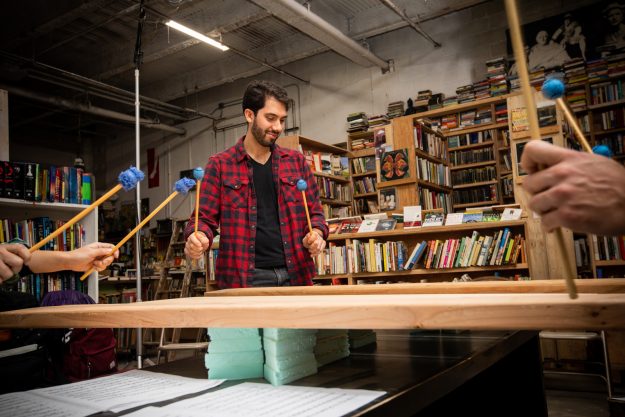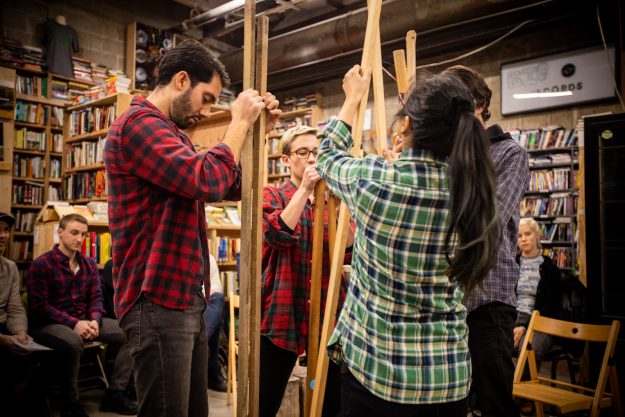Earlier this month, in a warehouse on the banks of the toxic Gowanus Canal in Brooklyn, four percussionists made music using scraps of trees. They crunched dry leaves, clattered Ikea bed slats, and beat on stumps. Sometimes they played brainy polyrhythms, sometimes exuberant jams, and sometimes they created chaos. The piece is called “Heartwood,” a percussion quartet composed by Jeff Shugo Berman, a student at the Village Zendo in lower Manhattan. Berman was inspired by the Mahasaropama Sutta, or “The Greater Discourse on the Simile of the Heartwood.”

In the sutta, the Buddha says that someone who seeks the fundamental teaching is like a woodcutter in search of the innermost, hardest timber—they go straight for the heartwood. In the same way, a practitioner must move past their superficial accomplishments along the Buddhist path to find the deeper truth. But the sutta contains another lesson: The truth, the heartwood, is always present. Berman likened it to how the raw sound of wood can be heard in the instruments we craft from it.
“When we drag around a bunch of Ikea bed slats and make noise, it makes the point that these pieces of wood that we’re constantly around always make sounds and express textures. We can hear that all the time if we’re prepared to,” said Berman, 27, who studied ethnomusicology at Wesleyan University.

Berman and his quartet (including Robby Bowen, Caitlin Cawley, and Chihiro Shibayama, who hold degrees in music from The New School, the Manhattan School of Music, and Juilliard, respectively) debuted “Heartwood” on November 2 at Big Reuse, which sells demolition waste, loosely organized in a warehouse full of towering steel shelves. Rows of old toilets face stacks of picture frames; an occasional antique clock or Singer sewing machine ornaments a pile of cast-iron radiators. Berman’s quartet contributed to the mess, throwing around leaves and dowel rods. The audience sat on second-hand folding chairs in a tight circle around the musicians. When the performers rubbed sandpaper on plywood in rhythm, the audience inhaled the sawdust and coughed.
Despite the mess, many of the movements in “Heartwood” were tightly disciplined. Near the start, the four musicians beat tree trunks with sticks, each in a different time signature, so the audience could hear the beats diverge and then precisely converge again.

Berman plans to perform the piece in other venues, and to hold public workshops where people can make their own instruments from recycled wood. He wants his audience to experience all the relationships humans have with wood, especially as a material for musical instruments. “The wood is expressing its sounds all the time,” he said, in the same way that the dharma is always being expressed.
After the debut performance, one audience member wandered into the warehouse to knock on the used furniture. She exclaimed, “Everything is percussion!”
♦
Further reading: If you enjoyed this article, you might be interested in reading a review of Leonard Cohen’s latest Zen-inspired music video (released posthumously), this article on reviving classical Japanese court music, or our interview with avant-garde artist and musician Laurie Anderson.
Thank you for subscribing to Tricycle! As a nonprofit, we depend on readers like you to keep Buddhist teachings and practices widely available.
